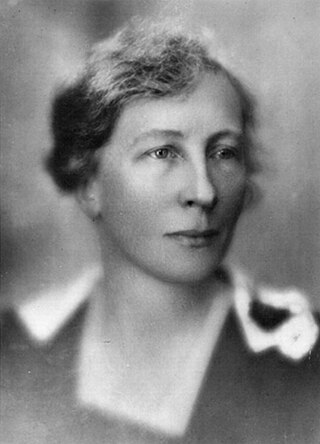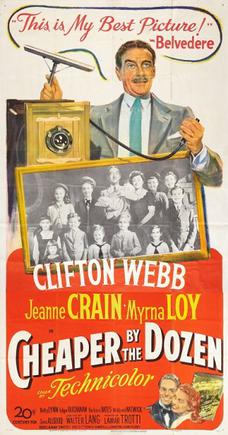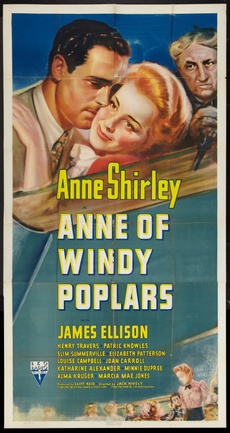
Lillian Evelyn Gilbreth was an American psychologist, industrial engineer, consultant, and educator who was an early pioneer in applying psychology to time-and-motion studies. She was described in the 1940s as "a genius in the art of living." Gilbreth, one of the first female engineers to earn a Ph.D., is considered to be the first industrial/organizational psychologist. She and her husband, Frank Bunker Gilbreth, were efficiency experts who contributed to the study of industrial engineering, especially in the areas of motion study and human factors. Cheaper by the Dozen (1948) and Belles on Their Toes (1950), written by two of their children tell the story of their family life and describe how time-and-motion studies were applied to the organization and daily activities of their large family. Both books were later made into feature films.

Nora Ephron was an American journalist, writer, and filmmaker. She is best known for her romantic comedy films and was nominated three times for the Writers Guild of America Award and the Academy Award for Best Original Screenplay for Silkwood (1983), When Harry Met Sally... (1989), and Sleepless in Seattle (1993). She won the BAFTA Award for Best Original Screenplay for When Harry Met Sally..., which the Writers Guild of America ranked as the 40th greatest screenplay of all time.

Cheaper by the Dozen is a 2003 American family comedy film directed by Shawn Levy. It is a remake of the 1950 film of the same name. Both films were inspired by the semi-autobiographical book Cheaper by the Dozen by Frank Bunker Gilbreth Jr. and his sister Ernestine Gilbreth Carey. It stars Steve Martin, Bonnie Hunt, Hilary Duff, Tom Welling, and Piper Perabo with supporting roles by Kevin G. Schmidt, Alyson Stoner, Jacob Smith, Forrest Landis, Liliana Mumy, Morgan York, Blake Woodruff, Brent and Shane Kinsman, Paula Marshall, and Alan Ruck. Outside of a couple passing mentions of the Gilbreth name, the film has little connection with the original source material.

Frank Bunker Gilbreth was an American engineer, consultant, and author known as an early advocate of scientific management and a pioneer of time and motion study, and is perhaps best known as the father and central figure of Cheaper by the Dozen.

Gail Davis was an American actress and singer, best known for her starring role as Annie Oakley in the 1950s television series Annie Oakley.

Parley Edward Baer was an American actor in radio and later in television and film. Despite dozens of appearances in television series and theatrical films, he remains best known as the original "Chester" in the radio version of Gunsmoke, and as the Mayor of Mayberry in The Andy Griffith Show.
Robert Paul Arthur was an American motion picture actor who appeared in dozens of films in the 1940s and 1950s.

Cheaper by the Dozen is a 1950 American comedy film based upon the autobiographical book Cheaper by the Dozen (1948) by Frank Bunker Gilbreth Jr. and Ernestine Gilbreth Carey. The film and book describe growing up in a family with twelve children, in Montclair, New Jersey. The title comes from one of Gilbreth's favorite jokes, which played out in the film, that when he and his family were out driving and stopped at a red light, a pedestrian would ask: "Hey, mister! How come you got so many kids?" Gilbreth would pretend to ponder the question carefully, and then, just as the light turned green, would say: "Well, they come cheaper by the dozen, you know", and drive off.

Belles on Their Toes is a 1950 autobiographical book written by the siblings Frank Bunker Gilbreth, Jr. and Ernestine Gilbreth Carey. It is the follow-up to their book Cheaper by the Dozen (1948), and covers the period after Frank Gilbreth, Sr. died. It was adapted as a film in 1952.

Ernestine Moller Gilbreth Carey was an American writer.

John Archer was an American actor.
Phoebe Ephron was an American playwright and screenwriter, who often worked with Henry Ephron, her husband, whom she wed in 1934.

Frank Bunker Gilbreth Jr. was an American journalist and author. He co-authored, with his sister Ernestine, the autobiographical bestsellers Cheaper by the Dozen and Belles on Their Toes. Under his own name, he wrote multiple additional books, such as Time Out for Happiness and Ancestors of the Dozen, and a long-running newspaper column.

The Little Foxes is a 1941 American drama film directed by William Wyler. The screenplay by Lillian Hellman is based on her 1939 play The Little Foxes. Hellman's ex-husband Arthur Kober, Dorothy Parker and her husband Alan Campbell contributed additional scenes and dialogue.

Cheaper by the Dozen is a semi-autobiographical novel written by Frank Bunker Gilbreth Jr. and Ernestine Gilbreth Carey, published in 1948. The novel recounts the authors' childhood lives growing up in a household of 12 children. The bestselling book was later adapted into a feature film by Twentieth Century Fox in 1950 and followed up by the sequel, Belles on Their Toes (1950), which was adapted as a 1952 film.

The areas of a kitchen work triangle is a concept used to determine efficient kitchen layouts that are both aesthetically pleasing and functional. The primary tasks in a home kitchen are carried out between the cook top, the sink and the refrigerator. These three points and the imaginary lines between them make up what kitchen experts call the work triangle. The idea is that when these three elements are close to one another, the kitchen will be easy and efficient to use, cutting down on wasted steps.

So This Is Love is a 1953 American musical drama film directed by Gordon Douglas, based on the life of singer Grace Moore. The film stars Kathryn Grayson as Moore, and Merv Griffin. The story chronicles Moore's rise to stardom from 1918 to February 7, 1928 when she made her debut at the Metropolitan Opera.

Anne of Windy Poplars is a 1940 film based on the novel of the same name by Lucy Maud Montgomery. A sequel to the 1934 film Anne of Green Gables, it features Anne Shirley returning from the first film in the title role.
The Gilbreth Medal is a former management award (1931–2002) for outstanding contributions to Industrial Engineering, established in 1931 by the Society of Industrial Engineers in honor of Frank Bunker Gilbreth Sr.

The Cheaper by the Dozen franchise consists of a series of films and stage adaptations, based on the real-life events of the Gilbreth family. Based on novels co-written by Frank B. Gilbreth, Jr. and Ernestine Gilbreth Carey, the series of movies include two biographical films and three loosely-remade family comedy films inspired by their story. The general plot centers around the lives of parents with a large number of children. Each depicts familial relationships, and working through the challenges that arise with an over-sized household.

















